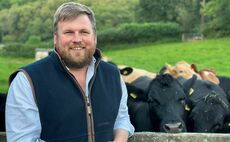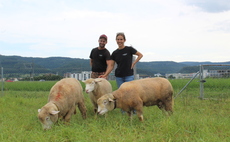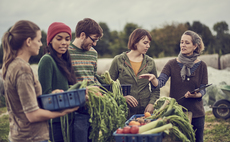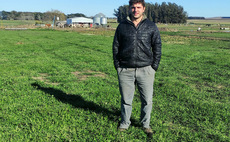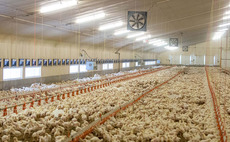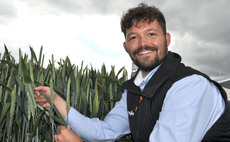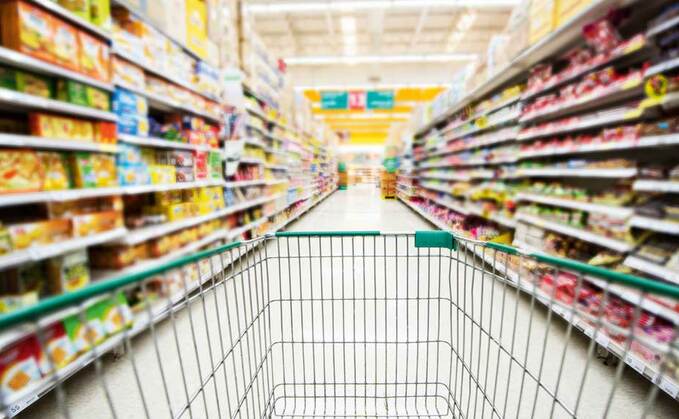
The Covid-19 pandemic has prompted huge changes in consumers' shopping and cooking habits, with other trends more likely to follow. Clemmie Gleeson discovers how Co-op has responded to the changing demand.
The dramatic changes to lifestyle brought about by Covid-19 have prompted massive changes in the way shoppers have bought and cooked food.
Average spends increased, particularly in the early ‘panic buying' stages of the pandemic and the contents of shopping baskets changed to include many more traditional favourites.
Grace Kaczmarczyk of Co-op's retail insights department says: "People were following the guidance on shopping less frequently, so typical basket sizes grew and the number of trips reduced." The general theme was larger baskets, fewer trips and larger quantities, with shoppers aiming to fulfil more needs in one go, she explains.
Before Covid-19, 22 per cent of meals were eaten outside the home, says Fiona Clayton, category development planner for protein.
She says: "All of a sudden all those extra meals were being made at home." Households were sitting down to meals together more than before too.
Extra time at home
The extra time spent at home reignited a love of cooking for many, with classic meals, such as sausage and mash and cottage pie, the most popular choices during lockdown.
Home baking has also seen a resurgence.
Many shoppers have confirmed their cooking skills have developed over lockdown with 42 per cent cooking from scratch more than before and 32 per cent thinking this will continue for them post-lockdown.
This has all of course meant huge challenges for supermarkets and their suppliers.
Sales of products such as mince, chicken and sausages ‘went through the roof' in the early days and supply was the initial challenge, says Fiona.
Unlike the normal peak times such as Christmas and Easter, which are months in the planning, the commercial team at Co-op were responding literally overnight with many working remotely as well.
Creativity
She says: "Shoppers were understanding and you could see where they would end up buying different things.
For example they may have bought frozen and ambient products where they might have usually chosen chilled versions.
"Customers were accepting they may have to be more creative.
It was interesting to see how quickly people's habits started to evolve." Fresh meat sales skyrocketed, with households spending six times as much on fresh meat.
The biggest increase was in pork sales, with a 690 per cent increase, while beef sales grew by 519 per cent.
While consumer habits have become less frantic as lockdown eased, every day staples such as bacon and sausage are still seeing strong growth, says pork buyer Andy Neal.
Overall sausage sales have sustained an average of more than 20 per cent growth compared to pre-Covid-19 figures, with premium sausages being particularly successful.
"Foodie cuts saw some good increases too, like belly slices and tenderloin fillet." At its peak vegetable sales were up by 30 per cent, says vegetable buyer Michael Dell'armi.
He says: "This settled during the Covid-19 period to about 15-20 per cent and is now resting at about 10 per cent." To meet demand, the supermarket made changes to its specifications across the board.
This included removing challenging product lines and introducing more British lines.
Michael says: "We did this with spring greens, removed Savoy which was really challenged availability-wise in Spain and replaced the fixture with spring greens, abundant and British.
"Overall, the success we have seen is largely down to us having strong, positive long-standing relationships with our supplier base." The timing was tricky for sourcing extra potatoes, says potato buyer James Occleston.
"It has been a challenging at times, especially as we have been at the tail end of the season using up all our remaining crop.
"Volume has consistently been about 20 per cent up on key potato lines since lockdown, but in peak weeks of the pandemic were up by as much as 78 per cent.
Some of this was met through Co-op taking potatoes which had been destined for high street restaurants and chip shops." In the dairy aisles, initial panic buying saw own label milk pints volumes increase up 22 per cent at its peak.
They settled in April and May to more normal levels, although remain 5 per cent higher than the same time last year.
Home Baking
The increase in home baking however has led to a 23 per cent increase in butter volume and 29 per cent in cream.
Michael says: "Supply for all volume has been maintained at about 100 per cent during the whole period." The team recognised the loss of the restaurant and catering trade had a ‘dramatic knock-on effects' for farmers.
It increased its volumes of beef by more than 40 per cent to help farmers sell higher value surplus cuts, which had been destined for restaurants or pubs.
Promotions on products like steaks and joints helped balance sales, says Fiona.
Activity on social media encouraging consumers to cook steaks at home all helped too.
"Many people have a limited repertoire, so we have been trying to help people think more broadly.
Many are frightened of cooking steak because it is more expensive and they worry about getting it wrong." Industry campaigns, such as the ‘Make it a steak night' promotions by AHDB, also helped raise awareness, she says.
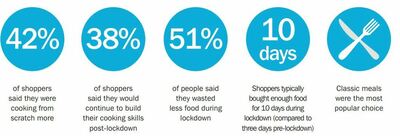
However we knew our kids Emma and Scott would be at home." The teenagers stepped in and took shifts every day.
"They were fantastic, we could not have done it without them.
The weather was great too, so that was on our side and made things easier." The loss of staffing was the biggest effect on the business, says Roger.
Customer focus
"The whole experience of Covid-19 has also made us more aware we are not just farmers, we are trying to produce food for the nation and we need to make sure we produce something the customer wants.
"Co-op has been very good at explaining this to us and how it affects us.
Sometimes lamb does not have a good press, which is a shame because it is one of the most natural and healthy meats out there.
We need to get that across more.
"Covid-19 has shown us we all need to support our home markets more.
It is tremendous Co-op only sells British meat and should be shouted about more. We produce a really top end product.
"Life on the farm still has its challenges, with some supplies still difficult to come by, but is generally returning to normal now."
Springmount Farm facts
- Upland farm with 73 hectares (180 acres) grass
- Sheep and beef cattle, plus contracting service
- 30 finishing cattle n 550 ewes mostly Texel Mules
- Various tups used, including Suffolk, Texel, Aberfield, Charollais and Belclare
- Lambing percentage more than 200 per cent
- Ewes are housed from Christmas until lambing in mid-March
- Lambs reach finished weight on grass after about 120 days
Changing habits
Changing habits
"If we step aside from how tragic it has been for so many people, it is interesting to see it takes something this extreme to make habits change in such a short window of time.
"The next challenge is looking at what the new normal will be.
Things such as working from home and cooking more from home is ongoing and we need to take into consideration what products we will need to meet that.
"Economic pressure is another aspect we need to be aware of, as well as people wanting things which can be a treat.
"Some people are nervous about going out to eat, but still want to get together and enjoy good food." Working with suppliers will continue to be key, Fiona says.
"We will continue to work hard to optimise the capacity of our suppliers and our capacity as a retailer to get as much of the right products on our shelves.
Spotlight: Mark Spendlove, beef supplier, Northamptonshire
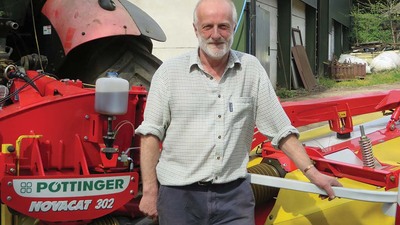
Northamptonshire beef farmer Mark Spendlove starting supplying the Co-op via Dunbia in Autumn 2019.
Running 120 suckler cows, which are British Blue dairy crosses which he puts to Hereford bulls, Mark rents some permanent pasture for grazing but recently has been excited about the use of herbal leys which he hopes will boost the health and nutrition of his cattle and ultimately the eating quality of his beef.
"The herbal leys will provide trace elements and minerals the cows need while also improving soil health," he explains, believing this will reduce the need to use boluses to target any deficiencies while also minimising Nitrogen applications on the land.
His livestock sales were not adversely impacted by the Covid-19 pandemic as he only had older cows to send to slaughter during lockdown. "But we have seen the value of them rise in response to consumer demand as more people are cooking at home.
"More people cooking at home is an opportunity to get the message across for British beef"
"It is our job to try and provide good quality meat to keep people eating beef. I believe the biggest threat to the UK beef industry isn't vegetarianism but poor eating quality of meat.
"If somebody buys a steak and it is inedible it will be three months before they try another one. With the pandemic and people cooking at home again it is a wonderful opportunity to get the message across for good quality British beef. If our industry doesn't produce good quality meat we will disappear."
Mark believes that feeding cattle well and minimising stress and movement throughout their life all contributes to eating quality. "We must focus on what the consumer wants to buy and it needs to be affordable."
Sandy Hill Farm
- Farm is a mixture of temporary grass (herbal leys), permanent pasture and arable land
- 120 British Blue cross females put to high index Hereford bulls
- 300-350kg typical carcase weights (heifers at lower end) at 21 months
- Only by-products are purchased for cattle feed including rape meal, sugar beet pulp, distillers grains, biscuit meal and Traffordgold
- Home-made grass silage is produced from ryegrass, red clover and herbal leys fed to be fed in winter
- Use of red clover in leys helps reduce Nitrogen use






